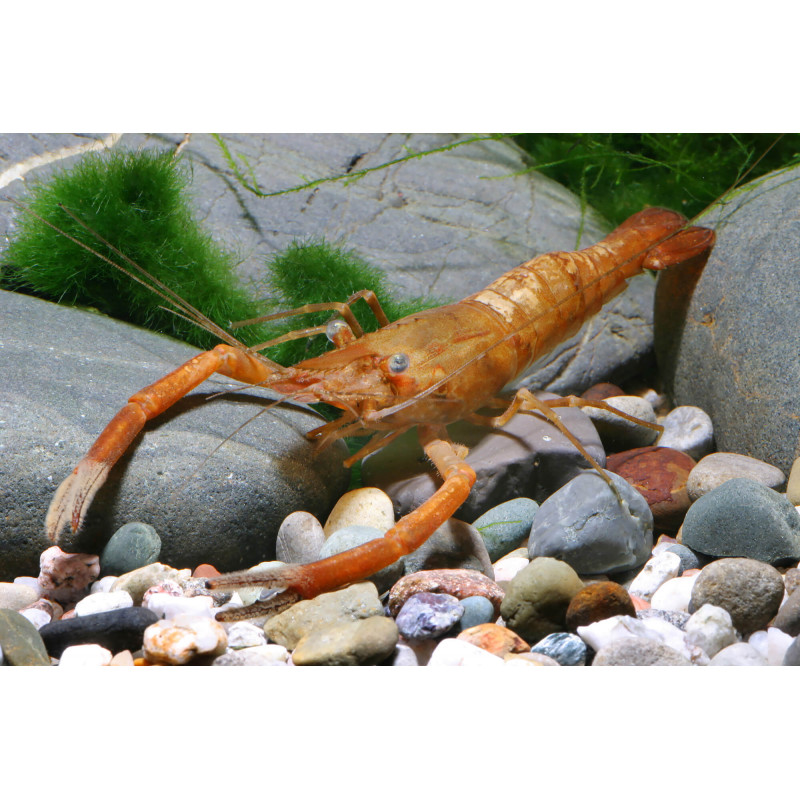More info
Macrobrachium dayanum - Chocolate Shrimp
| Minimum Tank Size | 60 gal / 227 L |
| Temperament | Territorial |
| Diet | Varied |
| Temperature | 20-30°C |
| pH | 7-8 |
The Chocolate Shrimp, scientifically known as Macrobrachium dayanum, belongs to the large-arm shrimp family. It's also known as the Red Rusty Shrimp. It's closely related to Macrobrachium assamense, which is also sometimes traded under the same name. These species look very similar, especially in their juvenile stages. In the wild, they inhabit freshwater rivers in southern India. The Chocolate Shrimp has a maximum lifespan of about 3 years. Females reach around 7 cm in size, while males can grow up to 9 cm. The males can be distinguished by their larger claw arms.
Keeping Macrobrachium dayanum is relatively uncomplicated. A tank of at least 60 liters is recommended for these territorial shrimp. The tank should not be densely planted, and sufficient hiding places, along with roots and stones for structure, should be provided. The shrimp require hiding places, especially during and after molting.
Chocolate Shrimp are adaptable to temperatures ranging from 20-30°C, with water hardness of 6-18 dGH and carbonate hardness of 3-15. The pH value should be between 7 and 8. They are crepuscular and nocturnal, often showing themselves less during the day and emerging from hiding places to feed.
When kept together, territorial behavior can lead to conflicts among these shrimp. It's advisable to provide enough space to avoid atypical behavior and dwarfism. Around 20 liters per shrimp is recommended, with at least 60 liters for a group (e.g., a 60-70 liter aquarium for 1 male and 2 females).
Chocolate Shrimp have a varied diet that includes fish food, small snails, catfish rods, mosquito larvae, and small artemia crabs/stream shrimp. After successful mating, females carry up to 60 eggs under the pleon for about 4-6 weeks before releasing fully developed young.
While these shrimp can be socialized, care should be taken to prevent them from eating smaller fish, sleeping fish, snails, or other shrimp species. Breeding can occur in the parent tank, but raising young shrimp is safer in a separate breeding tank.
Illustrative photo.




